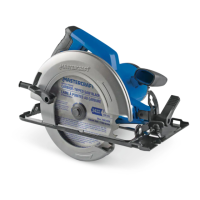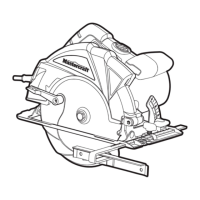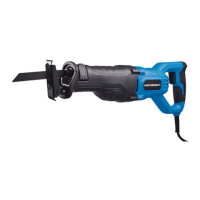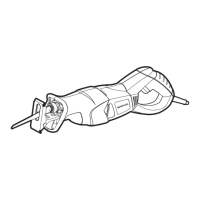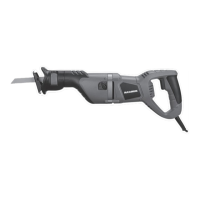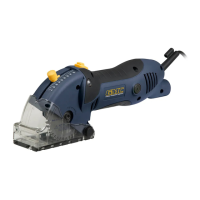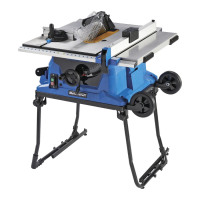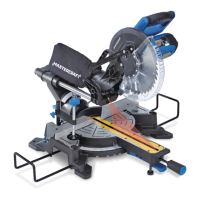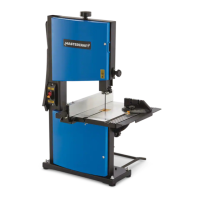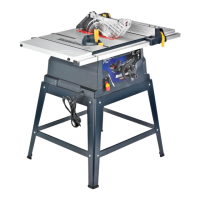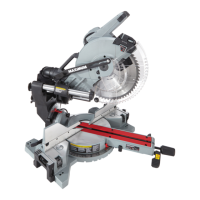7 1/4" CIRCULAR SAW - 054-8357-67 1/4" CIRCULAR SAW - 054-8357-6
1413
OPERATING INSTRUCTIONS
OPERATING INSTRUCTIONS
This saw can be used for the purpose listed below:
•
Cutting all types of wood and wood products.
NOTE:
The use of abrasive cut-off wheels is not recommended with this saw.
WARNING!
Do not allow familiarity with tools to cause carelessness. Remember that a fraction of a
second of carelessness is sufficient to inflict serious injury.
WARNING!
Always wear safety goggles or safety glasses with side shields when operating power tools.
Failure to do so could result in objects being thrown into the operator’s eyes, resulting in
possible serious injury.
Depth-of-cut adjustment
(g 3)
WARNING!
ALWAYS maintain the correct blade-
depth setting. The correct blade-depth
setting for all cuts should not exceed
the thickness of the material being cut
by more than 1/4" (6.5 mm). Greater
blade depth will increase the chance of
kickback, and cause the cut to be
rough.
1. Unplug the saw.
2. Pivot the depth-adjustment lever upward to release it.
3. Determine the desired depth of cut.
4. Hold the base at against the workpiece, and raise or lower the saw until the indicator mark on the saw
aligns with the desired depth on the scale.
5. Push down on the depth-adjustment lever to lock it into position.
fig 3
Adjusting the cutting angle
(Bevel)
(g 4)
1. Unplug the saw.
2. Loosen the bevel-lock lever, which is located on
the bevel gauge on the base plate.
3. Tilt the body of the saw until the required bevel is
reached (refer to the scale on the bevel gauge).
4. Tighten the bevel-lock lever.
Kickback
(gs 5–8)
Kickback occurs when the blade stalls rapidly and
the saw is driven back toward the operator. Blade
stalling is caused by any action that pinches the
blade in the wood.
DANGER!
Release the switch immediately if the
blade binds or the saw stalls. Kickback
could cause loss of control of the saw.
Loss of control can lead to serious
personal injury.
Toguardagainstkickback,avoiddangerous
practicessuchasthefollowing:
•
Setting the blade depth incorrectly.
•
Sawing into knots or nails in the workpiece.
•
Twisting the blade while making a cut.
•
Making a cut with a dull, gummed up, or
improperly set blade.
•
Supporting the workpiece incorrectly.
•
Forcing a cut.
•
Cutting warped or wet lumber.
•
Operating the tool incorrectly or misusing the tool.
fig 4
Bevel adjustment locking lever
fig 5
Kickback—Blade is set too deep
fig 6
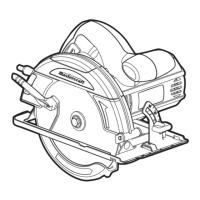
